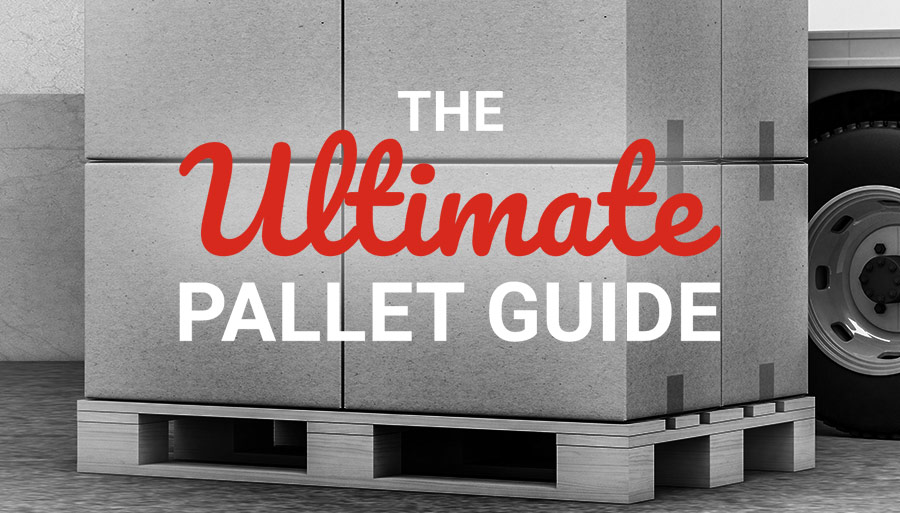Whether you’re a business or an individual who needs to send heavy and/or large items, chances are you’ll want them to arrive in perfect condition, so you’ll want to consider palletising them. Using pallets to ship your items has many benefits, it allows you to send large or heavy items or large quantities of products in one shipment to your desired destination. Pallets allow for products to be packed together and wrapped to minimise damage. At national pallets we make pallet delivery as easy as possible, however, we appreciate that not everybody understands how pallets work, or which is best for their needs, so we have created this comprehensive pallet guide to help you in the process.
How Pallet Delivery Works
Pallet delivery with National Pallets couldn’t be easier, for the sender, pallet delivery is designed to be as efficient as possible, simply enter the details into our quick quotes tool and choose the delivery option that best suits your needs.
Behind the scenes there’s a little more to it than that, there are a lot of steps that take place to ensure your pallet gets collected and delivered to its destination safely and as quickly as possible:
- Courier collects your pallet from the specified address
- Your pallet then gets taken to the collecting depot where it will be unique barcode label put on
- Your pallet is then sorted with others that are being delivered to similar areas. The barcode will also be scanned, and an email will be sent to you with a tracking number – so you can follow the pallets progress
- The pallet will then be assigned to a driver based on their area of coverage
- This driver will then deliver your pallet to the recipient along their delivery route
What is a Pallet?
A pallet is a flat transport structure usually made of wood, occasionally plastic, that is designed to support goods while being lifted by a forklift. A pallet provides a base for storing, handling and transporting products while also providing protection for the goods. Pallets are usually used for imports and exports and transporting large or heavy goods.
Types of Pallets
There are many types of pallets available, and it’s important to choose the correct pallet size and types of pallets for your needs. The most common pallet types in the UK are made from wood as this allows for strength and durability as well as being lightweight.
The standard size pallet in the UK is 120 cm x 100 cm and is available in a number of pallet types and weight-bearing capacities – the products you are shipping, and their total weight will need to be taken into consideration when choosing the correct pallet type. All pallet types are designed to be lifted by forklifts, so, therefore, have openings underneath to allow for the forklift to slot in, some pallets have only one point of entry whereas others have four. The types of pallets we use here at National Pallets are standard UK size with a 4-way entry point.
Where to Get a Pallet
Contrary to popular belief, pallets are very readily available. You can usually get them from your local DIY store who can offer them for free or for a small charge. There are also many independent pallet companies around the UK, so it’s worth researching to see if there are any in your local areas. If you’re still struggling with where to get a pallet, we can provide pallets for you at an additional cost – we do however require at least one working days’ notice so premium delivery wouldn’t be available in this case.
How to Track a Pallet Delivery
Tracking your pallet with National Pallets is easy, once the pallet is collected and back at the collecting depot, it will have a barcode label put on it. Once the label has been scanned, you will receive an email with the tracking number – you can click the link within the email to track your pallet or go to our website and enter the tracking number into the tracking tool. The order status will read ‘processing’ until the goods are in transit, once in transit you’ll be able to track them until they reach their final destination.
Benefits of Using Pallets
There are many advantages of using pallets for both manufacturers and shippers of commercial goods.
1) Easy to Use
One of the main advantages of shipping pallets is that they make items easier to transport. By combining a variety of small items and stacking them on a single pallet means shippers have fewer objects to keep track of.
2) Durability
Pallets are stronger than other shipping materials, allowing shippers to stack more and heavier objects on a single pallet. Alongside this, pallets will keep their contents up and off the ground, keeping products safe from dirt and debris.
3) Size
Pallets are strong and relatively lightweight which take up little storage space, especially in warehouses where they can be kept in tall stacks. Wooden and plastic pallets are light and add little weight to the products that are being shipped. A pallet is light enough for a single worker to carry.
4) Recyclable
Pallets are made from any material that is recyclable. Plastic and metal pallets are less likely to cause major damage as they can be melted down and recast. However, wooden pallets will wear down over time. Wooden pallets are diverse, allowing you to use them in various construction projects or as firewood. See our blog on unique pallet furniture ideas for some inspiration!
Get a quick quote from us today and see how much you could save on pallet shipping today!

